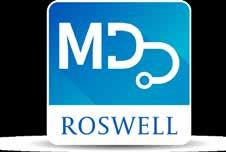
1 minute read
Risk Management
Strategies to Optimize Telehealth Encounters
The onset of the pandemic sparked widespread adoption of telemedicine, but new research indicates there is opportunity to improve the patient experience. Cited by Harvard Business Review, a Press Ganey survey of 1.3 million patients revealed that 89 percent were satisfied with their physician after a telemedicine visit, yet only 76 percent would recommend a video appointment after the virtual encounter. Although most patients appreciate the convenience of televisits, logistics, such as scheduling and establishing audio/video connections, can create frustration.
Advertisement
Data collected over a six-month period demonstrates an organic rise in patient satisfaction, however, Press Ganey’s Jessica Dudley and Lyue Sung say the following practices can help to ensure a “seamless, low-friction experience” for patients: • Create a “central resource team” to ensure proper staff allocation and workflow support while scaling telemedicine • operations. This team should focus on “optimizing the technology for video visits … and arranging for telephone visits if patients or providers are unable, or reluctant, to use video.” • Standardize virtual patient experiences across specialties and offer the option when possible. • Thoroughly train physicians and office staff to ensure a seamless and consistent experience.
Despite initial fluctuations, Dudley and Sung note virtual visits, as of mid-August, account for about 15 percent appointments, a percentage significantly higher than the pre-pandemic average of less than 1 percent. They explain the increase is, in part, due to patient satisfaction with provider attentiveness on screen compared to in-person interactions.
MLMIC advises our insureds to continuously monitor the effectiveness of their telehealth visits and address any identified areas for improvement as part of their overall program.
Reprinted with permission from www.MLMIC.com. All Rights Reserved. No part may be reproduced or transmitted in any form or by any means, electronic, photocopying, or otherwise, without the written permission of MLMIC.









